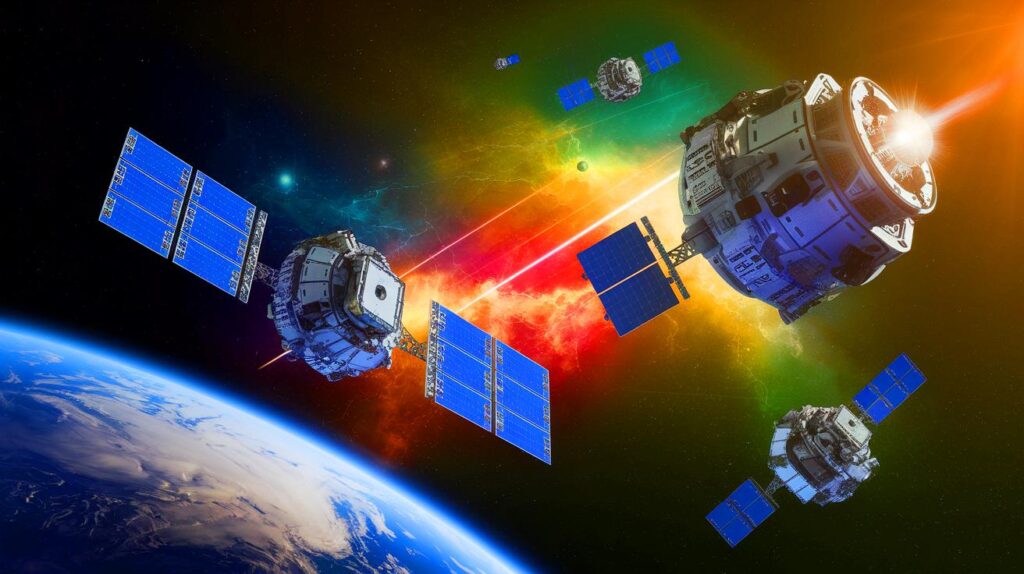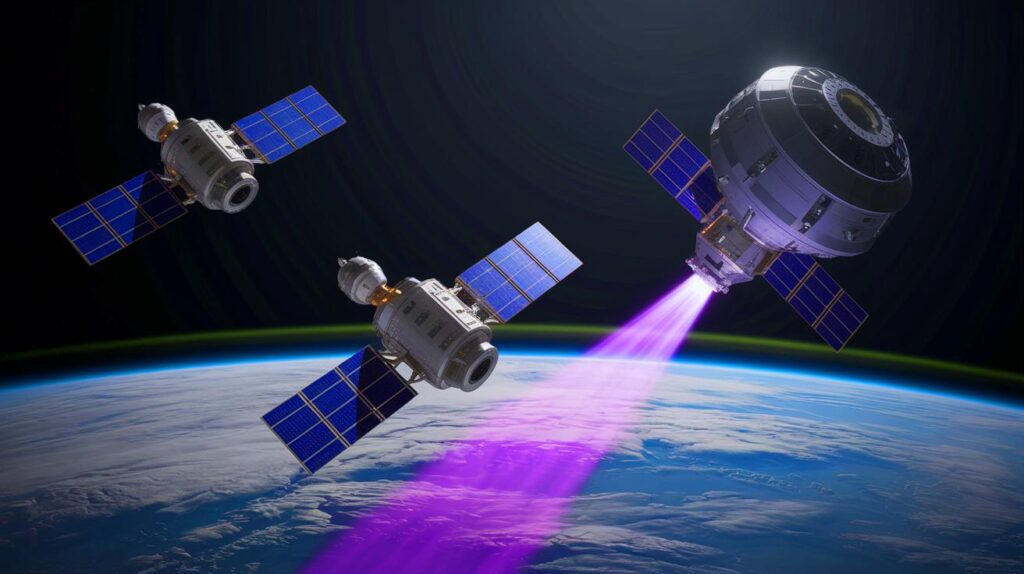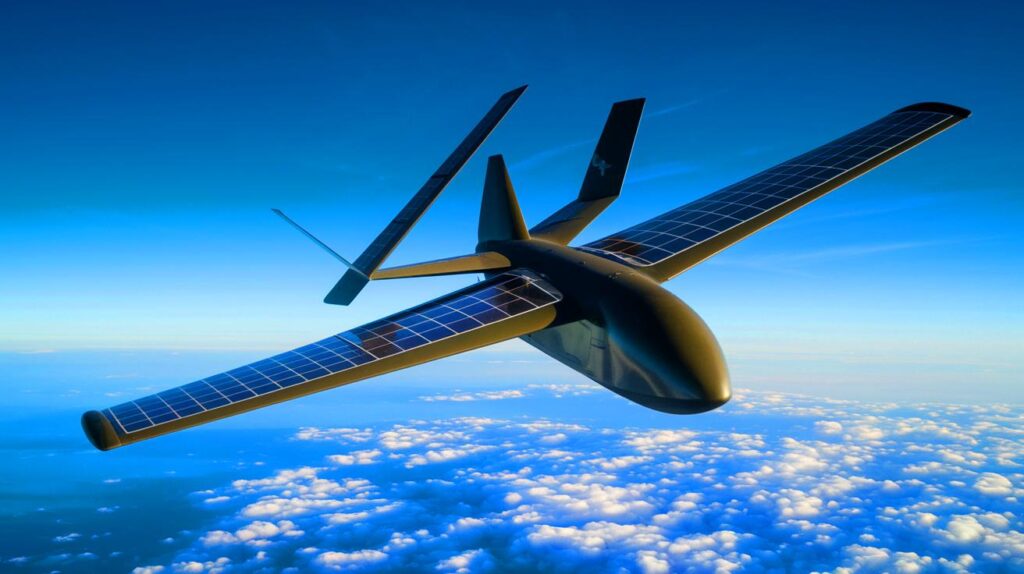| In Brief |
|
The recent maneuvers of Chinese satellites in low Earth orbit have raised international security concerns. China’s advanced space capabilities, coupled with these tactical maneuvers, evoke scenarios once imagined in science fiction. As the U.S. Space Force closely monitors these developments, the once-peaceful domain of space is transforming into a potential battleground for great powers. This analysis examines the intricacies of these maneuvers, the technological advancements that enable them, and the broader implications for international space relations.
Advanced Space Capabilities of China
At a recent conference in Washington, General Michael Guetlein revealed that China is actively conducting military maneuvers with its satellites. These operations, observed by the United States, involve synchronized movements of multiple space objects, demonstrating a level of control and precision likened to “air combat.” Exercises specifically include three experimental Shiyan-24C satellites and the Shijian-605 A and B spacecraft.
The ability to perform such maneuvers in orbit reflects China’s growing expertise in space technology. Similar advancements are being pursued by other global entities. For instance, the Japanese company Astroscale has developed a satellite capable of tracking the speed of space debris, which moves at approximately 28,968 km/h. Dr. Samantha Lawler, an astronomer, compared this technological achievement to “catching bullets,” highlighting the sophistication required for such operations.
Establishing Space Superiority
The quest for space superiority by the U.S. Space Force is driven by the narrowing technological gap between the United States and its geopolitical rivals, particularly China and Russia. General Guetlein underscored past activities by Russia, such as the 2019 “Russian doll” demonstration, where a satellite released a smaller one to maneuver close to an American satellite. This highlights the necessity for the U.S. to maintain its technological lead.
Historically, the U.S. has held a significant advantage in space, but that advantage is threatened as other nations rapidly develop their technologies. Guetlein emphasized the need to reassess the American approach to space operations to prevent the capability gap from reversing. The mission of the Space Force is to ensure that space operations support joint military efforts, aligning with the broader strategic objectives of the U.S. military. This shift in focus marks a departure from the principles of the 1967 Outer Space Treaty, which aimed to preserve space for peaceful scientific exploration.
The Outer Space Treaty and Modern Challenges
The 1967 Outer Space Treaty represented a historic agreement to maintain space as a domain of peaceful exploration and scientific progress. However, the current militarization of space directly contradicts these ideals. The treaty’s principles are increasingly overshadowed by the strategic interests of powerful nations, each seeking to gain an advantage in space capabilities.
Officials from the U.S. Space Force have pointed fingers at China and Russia for accelerating this militarization. Conversely, these nations accuse the United States of instigating an arms race in space. This cycle of blame illuminates the complexities of the geopolitical dynamics at play, where each side justifies its actions as necessary defensive measures. The original vision of the treaty for cooperative exploration now seems distant, as nations prioritize national security over collective scientific progress.
Implications for Global Security
The militarization of space has profound implications for global security and stability. As nations develop advanced space capabilities, the risk of conflicts spilling beyond Earth increases. The potential for confrontations between satellites or disruptions to global communication and navigation systems poses significant threats to international peace.
The strategic importance of space assets cannot be underestimated. They play a crucial role in military operations, intelligence gathering, and civil infrastructure. The growing competition in space reflects broader geopolitical tensions, where technological advancements are both a source of national pride and a potential catalyst for conflict. The question remains whether nations can navigate these challenges and find common ground to ensure that space remains a domain of peace and progress.
As the landscape of space operations evolves, critical questions arise about the future of international relations and security. With nations like China and Russia pushing the boundaries of space technology, how will the U.S. and its allies adapt to maintain balance? Will the original spirit of the Outer Space Treaty be revived, or will the cosmos become the next frontier of geopolitical rivalry?








